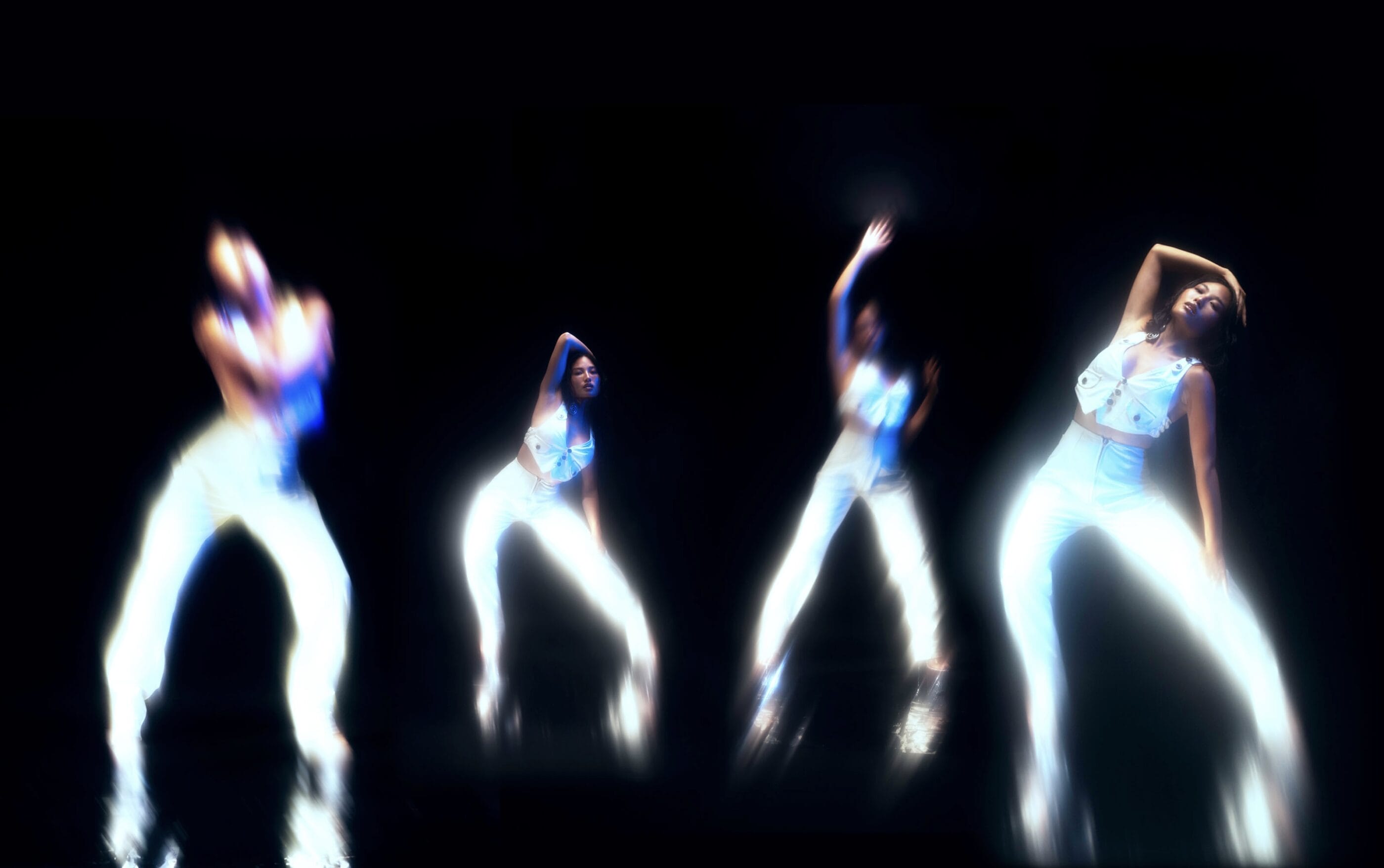Interview 086 • Jan 14th 2024
- Interview by Asa Featherstone IV, portraits of Dennis Larance by Spencer Hopkins
About Dennis Larance
Dennis Larance is a light-bending wizard working between LA + Chicago as a image-maker, creative director, + content creator.
Select Clients: Incredibles, Adobe, RCA, Red Bull, Xbox, Nike, Michelob, Sooper Records
Links
Foreword
In an era where we easily slip into the mundane, Dennis Larance’s photography is an invitation to dream, let our minds roam freely, and to seek the extraordinary lurking beyond our everyday experiences.
Dennis, also known as "DDesigns," is a photographer whose love for science fiction infuses every frame he captures. He’s one of the few individuals leading this next wave of artists: those who are a little nerdy, started making work on the internet, and are seeking more meaningful, long-lasting connections with others through their art. His recent photo book titled "Science Fantasy," was the entry point into that next phase of his artistic evolution.
Through our conversation, we get a glimpse into his process of creating the photo book, the crucial influence of comics and film in his work, and how his recent discovery of being on the spectrum liberated him as an artist.
----
This interview has been edited for clarity and content.
Interview
I think I saw you celebrated photographing for 10 or 11 years now. Is that right?
Yeah, October 2022 was 10 years doing photography. So that makes 11 years now.
How’s it feel seeing where you are now versus where you were starting out?
I’m grateful. As people, I think it’s so important to dedicate yourself to something for a bit of time, whether it’s three years, five years or more.
As for my work, from the beginning I felt like I knew what I was trying to make, I just didn’t know how to make it. Now, 10 years later, I feel like I finally have the skills to make what I’ve been seeing in my head. That ‘s been so gratifying. At the same time, I feel like these past 10 years were the prerequisite. It was the trial period and now the real work begins. It’s crazy to even say.
The prerequisite? I like how you put that. To think it took all that time just to get to the starting line…I feel that. So, what sorts of things are visualizing? In another interview I saw that you did with Adobe, you called your work Editorial Cinema. Do you still use that term? What does that mean?
I feel like I’m always trying to figure it out. Words are so funny, especially in artistic spaces. I talk about this with music a lot. It’s like when you’re struggling to pinpoint the right type of genre of the music to listen or make. I feel the same way about my photography. As I keep going, I’m constantly workshopping it.
So, client-facing work aside, the direction I see my work going in my head is something close to Science Fiction Opera: dramatic and bold. It’s telling a story in a flamboyant way. It’s heavily influenced by cinema: the colors and moodiness that come with that, along with the lessons and narratives too. I’ve fully dove into the science fantasy influence on me.
I’m inspired by the movies I’ve watched growing up, the cartoons, anime, comic books, all of that. I’m a big sci-fi guy, but also, I’m from Chicago where it’s gritty and cold. So, I turned science fiction into science fantasy. I see these fantastical stories in everyday moments, and I’m just trying to hone that together and see what happens.
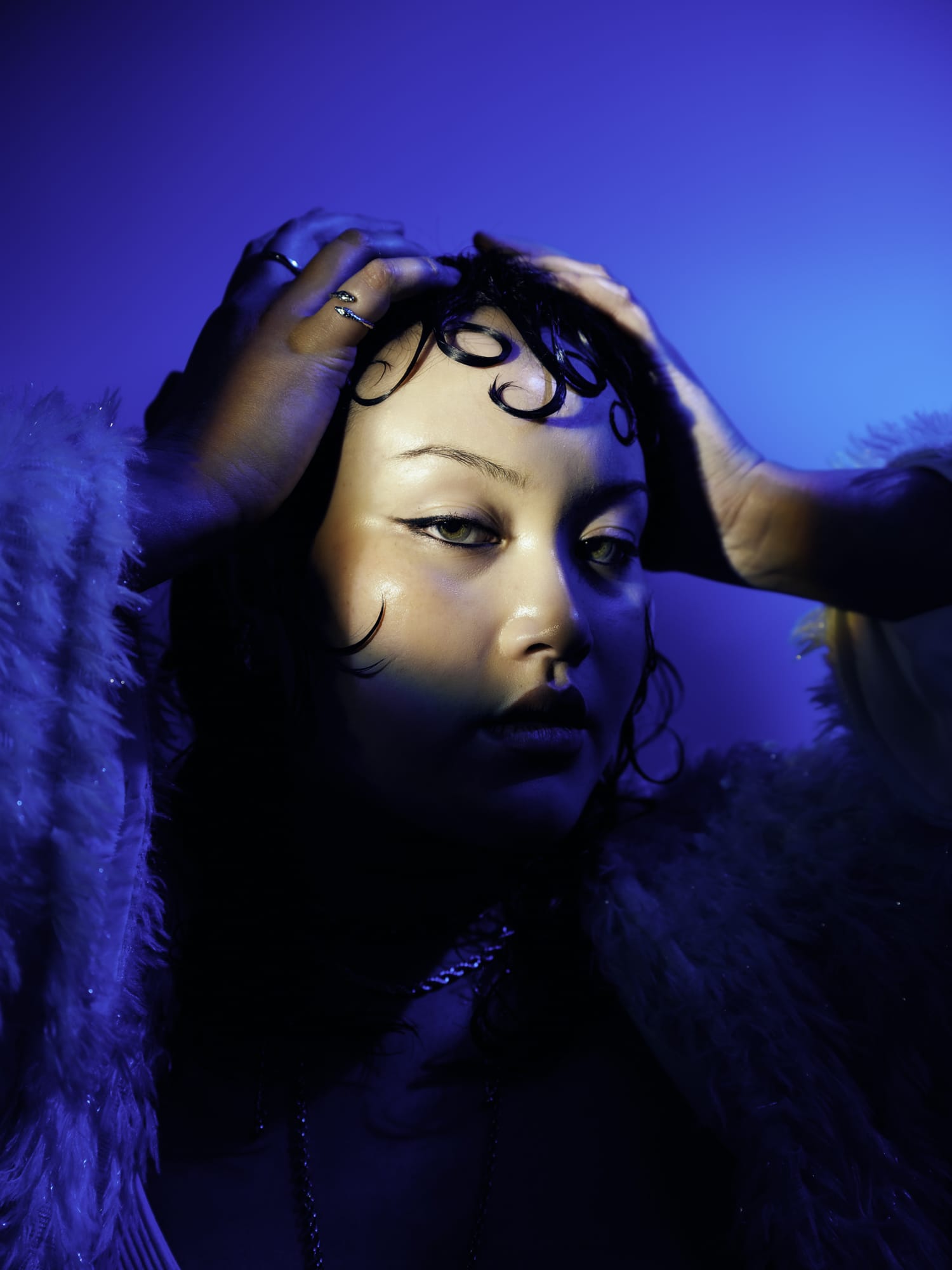
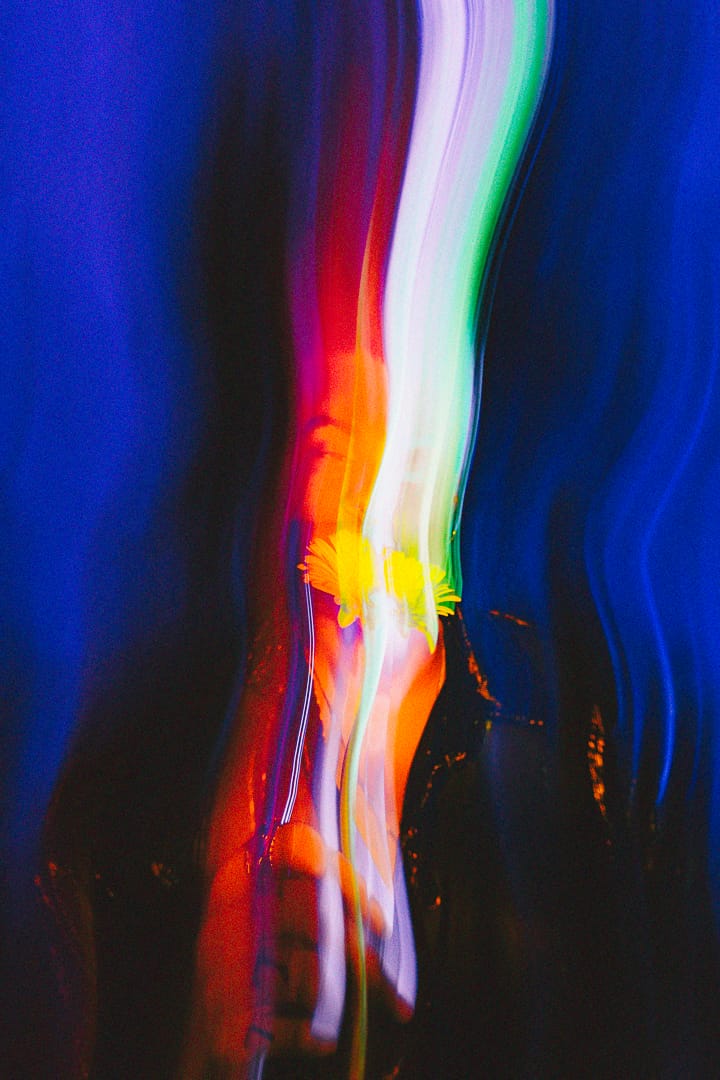
I’ll come back to Science Fantasy, but first, what are some of your favorite films?
Most definitely the Fifth Element, Mad Max, Blade Runner. Both versions. When we start talking about sci-fi noire? Man, that’s exactly where I’m trying to take my work. Like, that is really the peak for me.
Oh nice!
And young me loved anime. Like Toonami and Cowboy Bebop were other big influences.
Yeah, I can see that direct impact in your work. What do you like about these films, and science fiction as a whole in the first place?
That’s a good question…I have to admit, it’s pretty instinctual. There’s just something about the world of science fiction. I love the use of colors and action and the motivations or themes that they play into. But it’s funny because there isn’t one concrete reason, I’m just naturally drawn into that space.
Ever since I started photography, it’s been about the colors, and the use of light in some way, making a distinct look to fit the feeling you’re trying to convey. At the same time, we could boil it down to me just being a huge nerd, hahaha!
Haha! It could really be that simple.
That’s just what it is. Like, if there are pretty colors, explosions, cool characters, and cool outfits, I’m all for it.
Sometimes things like that don’t need a grand explanation. Is there something about the stories that stick with you?
Yeah, I think that’s part of it. For starters, the juxtaposition of the stories and the world are unlike anything else we see across media platforms. Mobile Suit Gundam immediately comes to mind if you’re familiar with that series – I consider that space opera. I love the depth of that series’ themes and how sophisticated their story is, but then they have something totally ridiculous like giant robots and lasers as the framework. And even though I’m not a huge fan, Star Wars does a great job with this. The lightsaber is such a cool idea.
In fictional stories as a whole, I love how characters are able to brings their emotions into a visual space: things like anger, perseverance, and anxiety become a power that you can physically see on screen through colors and auras. We can’t do that (in real life) outside of facial expressions and body language. A lot of 90s anime really mastered this art.
Yu Yu Hakusho does this in the Dark Tournament arc. I think it’s one of the best visual anime arcs of all time, period. I love the scene where the main character, Yusuke, breaks the chains holding him back and his powers turn into this blue bird. Like, how do you come up with that?
I might be nerding out out too hard now, but it’s only because I just re-watched it.
Haha! I respect it, and I’m seeing your point. It seems like the genre perfectly fits who you are.
Truly. Thinking about it a little bit more, I learned that I was on the spectrum when I was 27. I’m autistic and I study people closely all the time, right? Like, really analyze people. What I’ve learned through observations is that no matter where we come from, we have a lot of shared experiences. Sure, I can communicate that through conversations, but in my artwork, I can do an even better job of showing that we all have experiences that we share through the medium of fantasy.
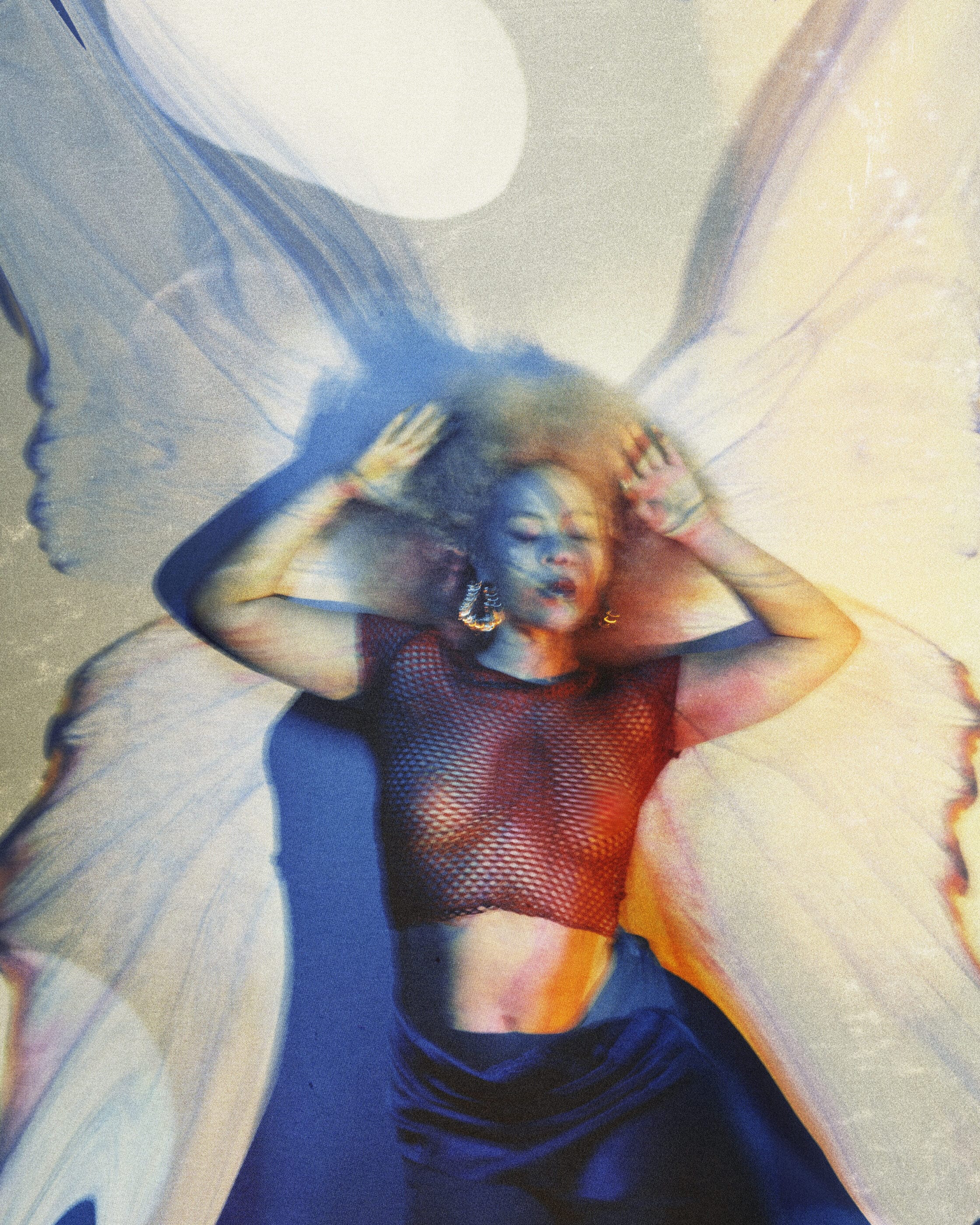
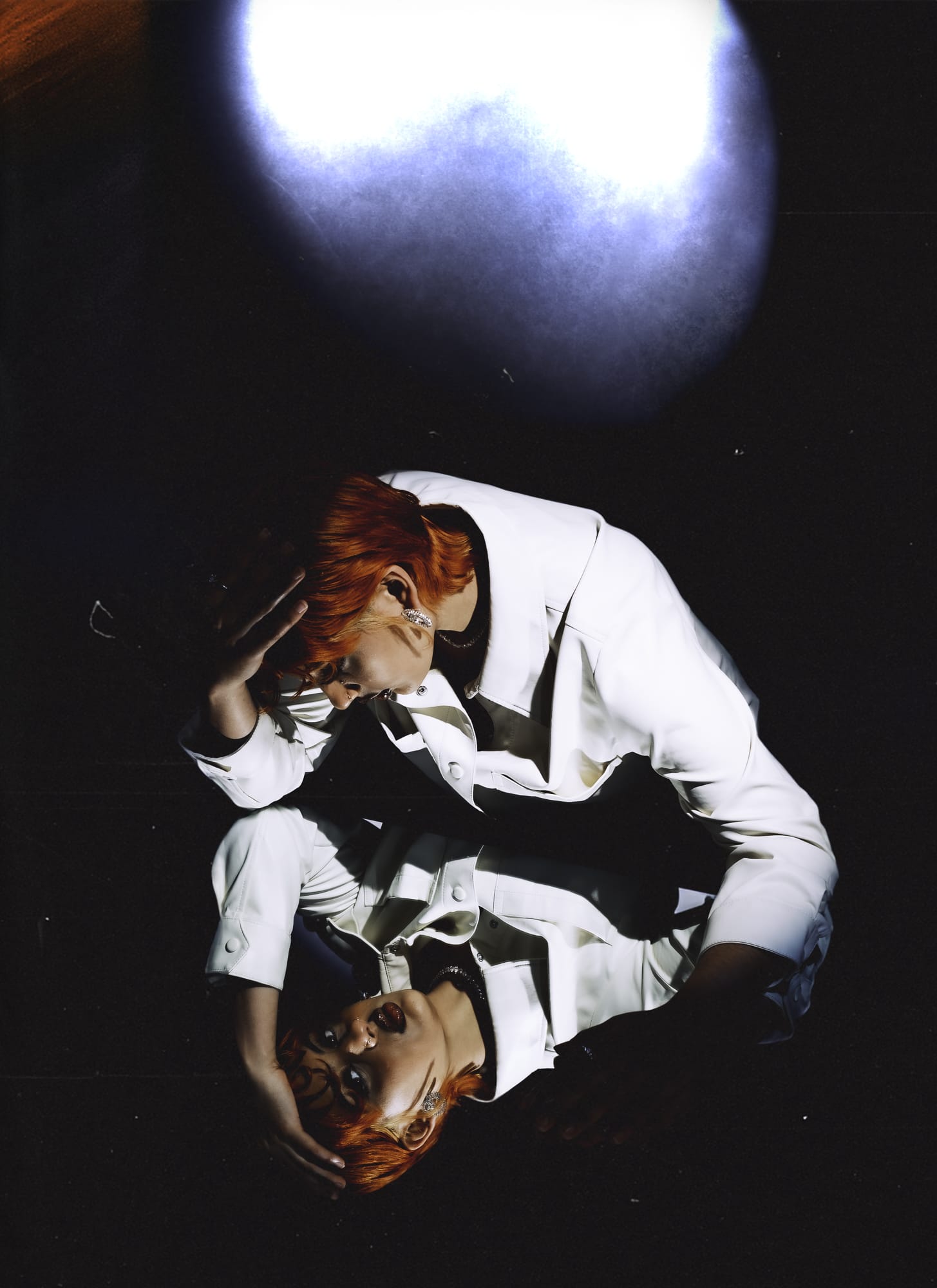
Oh wow. Did finding out you were on the spectrum impact how you want to make your work?
It didn’t change how I see my work, but it did give me insight on why I create the work that I do or why I’m so….for lack of a better word “obsessed” with it. It helps me understand why I’m so drawn to vivid visuals and why I’m so keen to share the fantastical stories that exist in our day-to-day life. My brain is legit wired this way. It can certainly be an interference at times, as I really struggle with communicating socially with others, but being in my lane, on the beat of my own drum is a freedom I don’t take lightly. If anything, I feel lighter and freer knowing my truth of being autistic and have a newfound appreciation and love for my craft and creations.
I respect that a lot and can see how you adapt to your lived experience.
I feel like that’s also what’s so appealing about science fantasy or science fiction. These worlds have such a cool take on themes that we all go through, and myself especially: perseverance, getting through a hard times, pushing through, and showing how beautiful that can be on the other side.
Yeah, science fiction does a really good job integrating real life issues into their stories, making it beautiful and palatable. So many of the series’ you mentioned are deeply political, but you wouldn’t notice at first glance.
So true! And these stories do a good job of expressing that things don’t always work out for the best. Life can be critical at times, and we don’t always win in the end. Being from South Chicago, that’s very real for me. It’s real for a lot of people.
Most definitely. Jumping back into Science Fantasy: you recently released a photo book with that same title, right?
Yeah! So, making a photo book is something I’ve always wanted to do, I just wasn’t ready. I was in LA when I hit the 10-year mark of my photography journey and decided to look back on all the work I made. That was the moment I realized that I had finally developed a strong enough point of view to make something cohesive.
How’d you develop that point of view?
I think just getting lost in the creative process: making stuff, collaborating, and then making more stuff. I feel like I’ve been able to build it from listening to others a ton, digesting the things I agreed with, discarding things I didn’t, and repeating that process. After a decade of that I hope I can come away with something. Haha!
Ha! Right. So, you put together the book…
At first, the book was going to be called Science Fiction, but that didn’t quite capture what I was trying to make. Fiction describes things that are possible, just untrue, where I think fantasy explores things we haven’t seen before. I like to think my work is using my inspirations to make something entirely new. So, I went with Science Fantasy.
I broke up the book into separate chapters that are like little stories, each having their own theme that come together to make up the entire experience. Intergalactic Intervention is the first chapter in the book, which is centered around higher forces, and — in ways — a version of yourself with a higher level of consciousness introducing you to the world that you’ll see throughout the rest of the book. I think the work is overall euphoric by nature.
It’s the first project I’ve put into print and I’m excited to keep building on it. I feel like it has the potential to turn into my version of a Blade Runner or Mad Max.
Mmm. It’s almost like you could think of it as a concept art book. Like the collectible books they make for video games and films.
Yeah. That’s exactly what I’m thinking of.
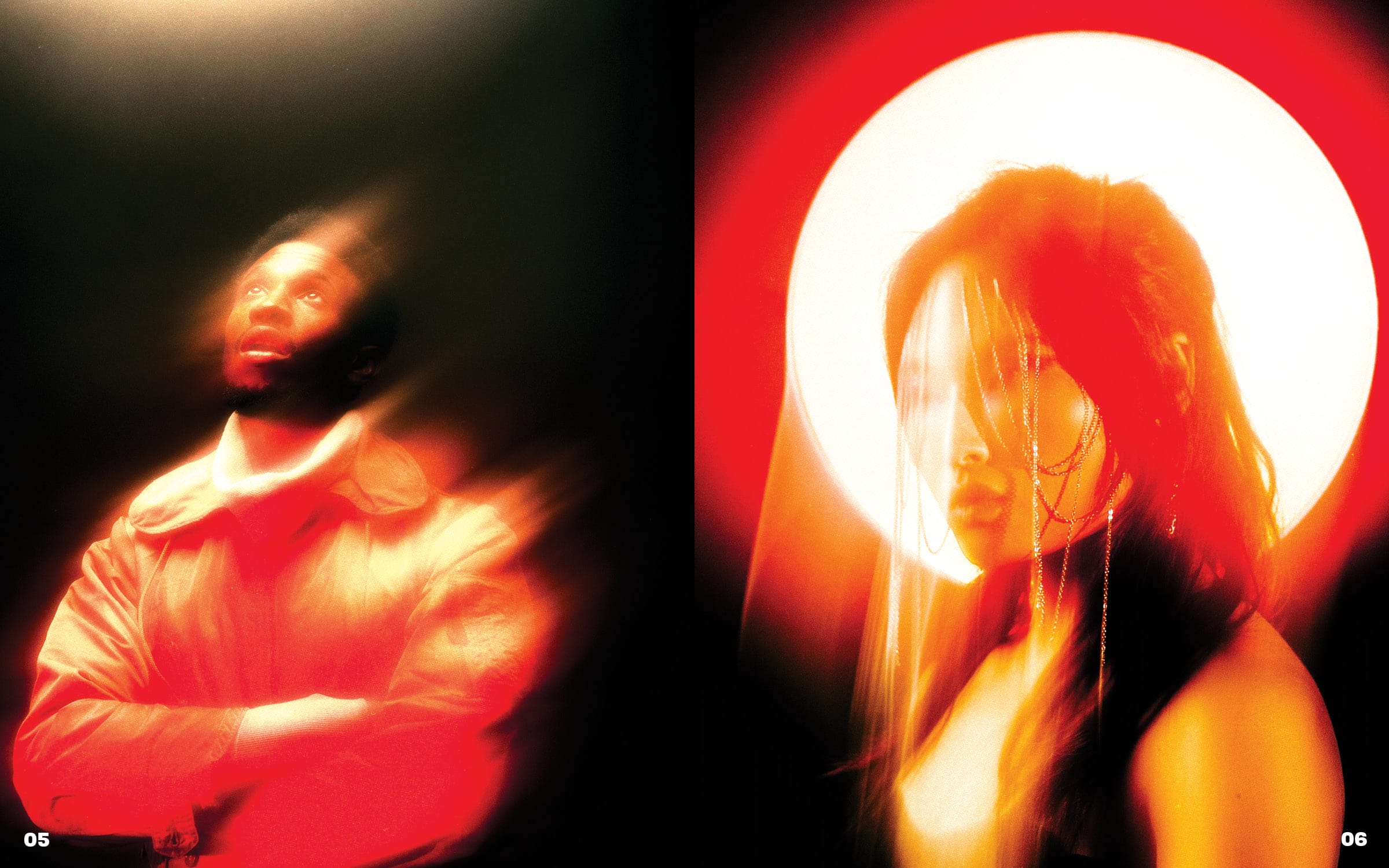
A lot of your influences are films and TV series, so why not go into filmmaking?
That actually is what I want to do.
What appeals to you about filmmaking that you might not be able to achieve with photography?
Hmm. One thing I’m struggling with in photography right now is conveying emotional scenes through an image. I can’t get the whole story in one photo.
Whenever I make my photos, I’ve always thought of them as a place in time in the movie, or like a movie cover. I’ve always wanted to capture a single moment, or the climax of that scene.
Now as I progress as an artist, I’m ready to expand on that. In addition to the climax, I want to capture the rising action, and the falling action and seeing the entirety of the moment I see in my head. Yeah, I can make a photo series. Cool, but now I’m at the point where I ask myself, “Why not just make the images move? I’m at the point where I’ve gotten a little comfortable with my photography and need to step into another challenge.
You need a challenge. I think that’s something a lot of us can relate to. I’m interested in seeing how that shift impacts your process.
I am too. I mean, making movies is no joke. It takes serious work. I’ve done like some short films and music videos in the past, and even those can take 3-4 weeks to edit.
That said, I do think there’s a bigger gratification that comes with completing these films just because of all the steps it takes to get to the finish line. Scripts and shot lists alone can take years. And I think that gratification is the feeling I’m chasing. Yeah, this might be harder, but I’m a stronger artist now than I’ve ever been.
Like I said before, I’m so inspired by movies like Blade Runner, Fifth Element, and Mad Max. You know, it’s time I start making something like that in my own way.
So, for you, filmmaking is a way to connect the dots within scenes or moments that are implied with photography. I dig that. Let’s say you dive all in and start directing films, would you abandon photography?
No, never. I think I’ll always include photo in a way, I’m still not sure how yet. I’d like to include photos into a concept or behind-the-scenes book like we talked about earlier. At the very least, I’ll use photography for promo and I’ll always have a camera on me when I’m on set. As much as I’m interested in filmmaking as an artform, there’s nothing like capturing the magic of a certain moment.
Photography will always be there for me. I just want to have an 80/20 percent balance with it: 80 percent film, and 20 percent photography.
That’s a major overhaul! In anticipating that shift, have you thought about how your process might change?
I’ve started to. I think the biggest change is going to be how much more closely I’ll be working with other artists. Especially if I’m going to put on the DP or director role. Even though I’m pretty collaborative with my photography, I can get away with doing entire projects by myself if I need to. Sometimes I prefer that. Working in motion doesn’t offer that same flexibility. That’s one of the reasons I started photographing in the first place, I was impatient and just wanted to get projects off the ground.
Technically, I think the biggest shift will be how I light my scenes. Lighting for a single moment and lighting for an ongoing moment are entirely different conversations. Still, I feel super confident because lighting and color are my bread and butter, and I’ve been doing video for around least six years on top of photo.
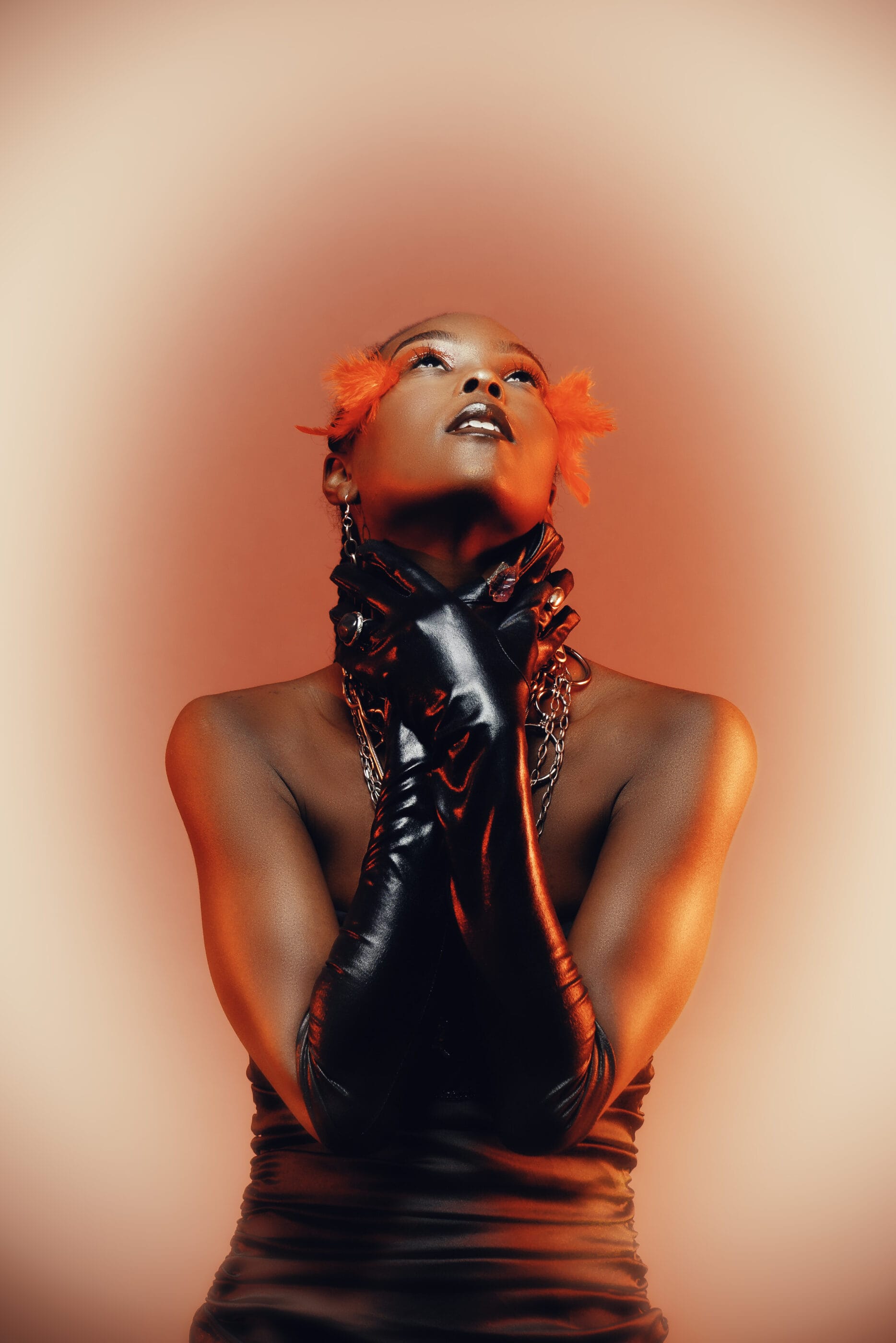
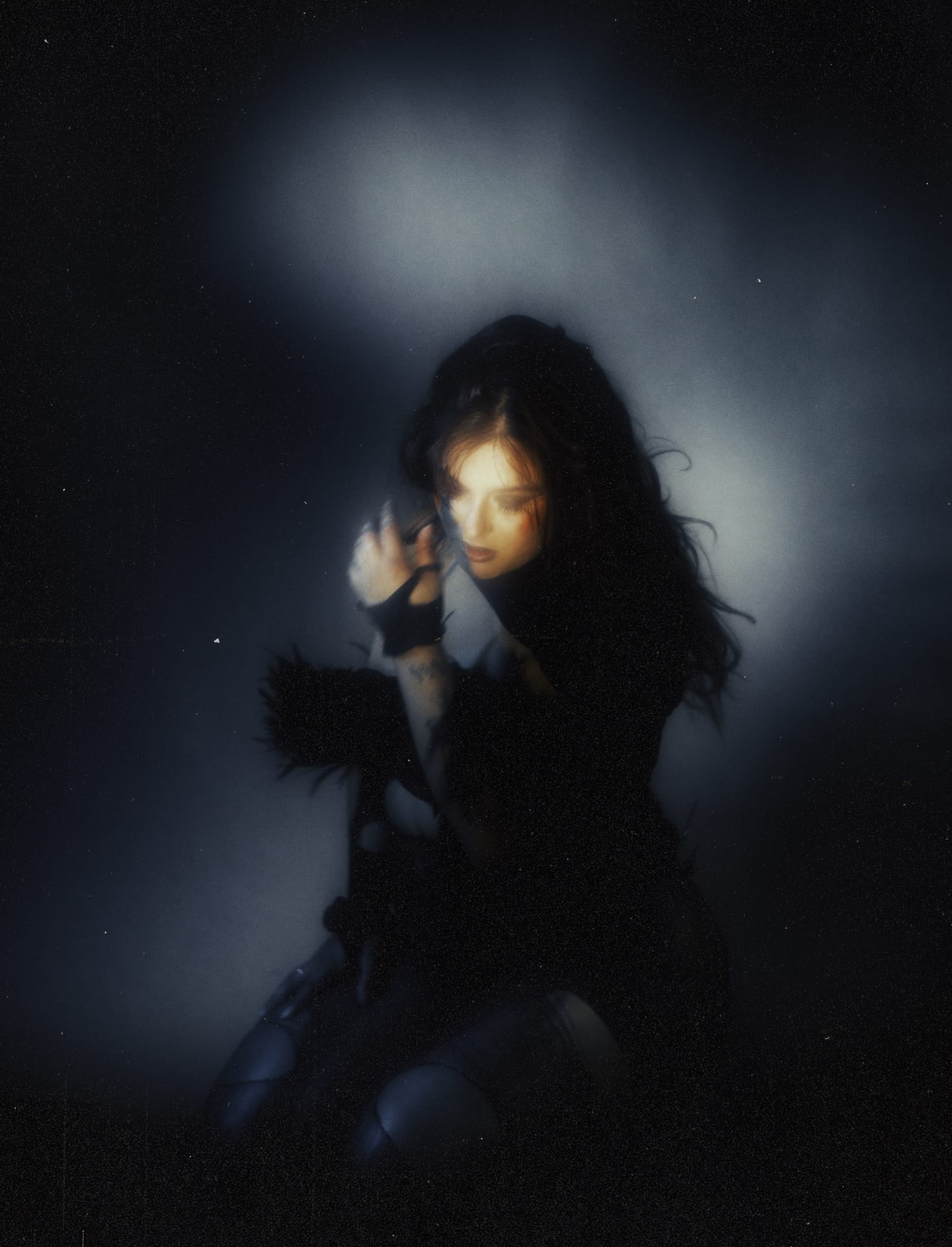
Right. I know you take a lot of pride in your editing style and technique. When you talk about the added collaboration required for filmmaking, do you think you’re ready to divide some of that post work in service of the film? Have you talked to yourself internally about that yet?
Haha. Yeah, I’ve had a big talk. It’s something I’ve been working on because I know I can be a bit of a control freak at times. In the grand scheme, I know it’ll be so freeing for my workflow. Once you’re working with a team, you’re able to give your all to one task. You’re not splitting your time, which is so much of what I’ve been doing up until now. Some of my best work has been from working with a team. You know, a stylist, assistants, digitechs – I’m cool with all that. I think I’ll have some challenges when it comes to collaborating in the postproduction stages. There are baby steps to this, though. My next few projects, I plan on getting in the habit of handing off parts of a project to people just to see what they make.
As much as I’ve built this intricate story through the world I’ve created in my photos, if I’m honest with you, at the end of the day I mainly only care about how it looks. Sure, narrative is a huge driver at times, but what truly gets me excited is how the light looks, how the frame was composed, and how everything in the picture cultivates a certain feeling for the audience. I just want to create unique, powerful looks when it comes to motion in the same way I do with my photographs.
Man, that’s pretty honest. I feel like that’s something that artists want to say, but don’t think they’re supposed to. Sometimes it’s okay to like something just because it looks cool, and narrative comes second.
Yeah. And that’s where I think collaboration could be great in filmmaking. Now I can put everything into my role as a DP if I have someone else writing a powerful narrative.
Totally. So, staying with collaboration, how does your photography process change when you’re working alone?
I think projects just takes a lot more time. I just posted a photo set last week with photos I sat on for almost a year.
I thought they were cool photos, but I never I had the time to edit them. I was working on some other stuff I couldn’t really like dive in how I wanted to. I didn’t like how the colors were coming out anyway, so I stepped away. When I came back to edit them again it came out perfectly. As slow as that process was, by stepping away and coming back, I was able to put 100 percent into the edit.
But man, if I was able to pass that off to somebody and give them creative notes, it could have been done six months ago.
Totally. One thing I notice about the science fantasy world that you’re creating, a lot of your images are portraits and human-focused. Why photograph people instead of making futuristic sets or landscapes?
So, I’ve seen some works—especially in the past few years— where artists are able to capture a feeling from landscapes and sets for sure, but I think having a person in the image sets the stage for emotions to be present and communicate what’s happening in the scene. It’s not impossible to do without a human subject, but at least for me, it lets me convey a sense loss, sadness or wonder more clearly.
Showing emotion is where my strength is. When I see landscapes, I’m like, that looks nice. Cool. It’s great for a wall, but it doesn’t go much further than that. There’s a photo I shot with my friend, Jada, last year where she’s hovered over top of these clouds. I feel like she’s an archangel looking down on a dark time in the world, and we don’t know whether she’s here to save it or cause more destruction. It’s one of my favorite images and I don’t think I could have got that shot without a subject, you know?
Yeah! People frame the experience emotionally for your work.
Yeah, I love how you put that!
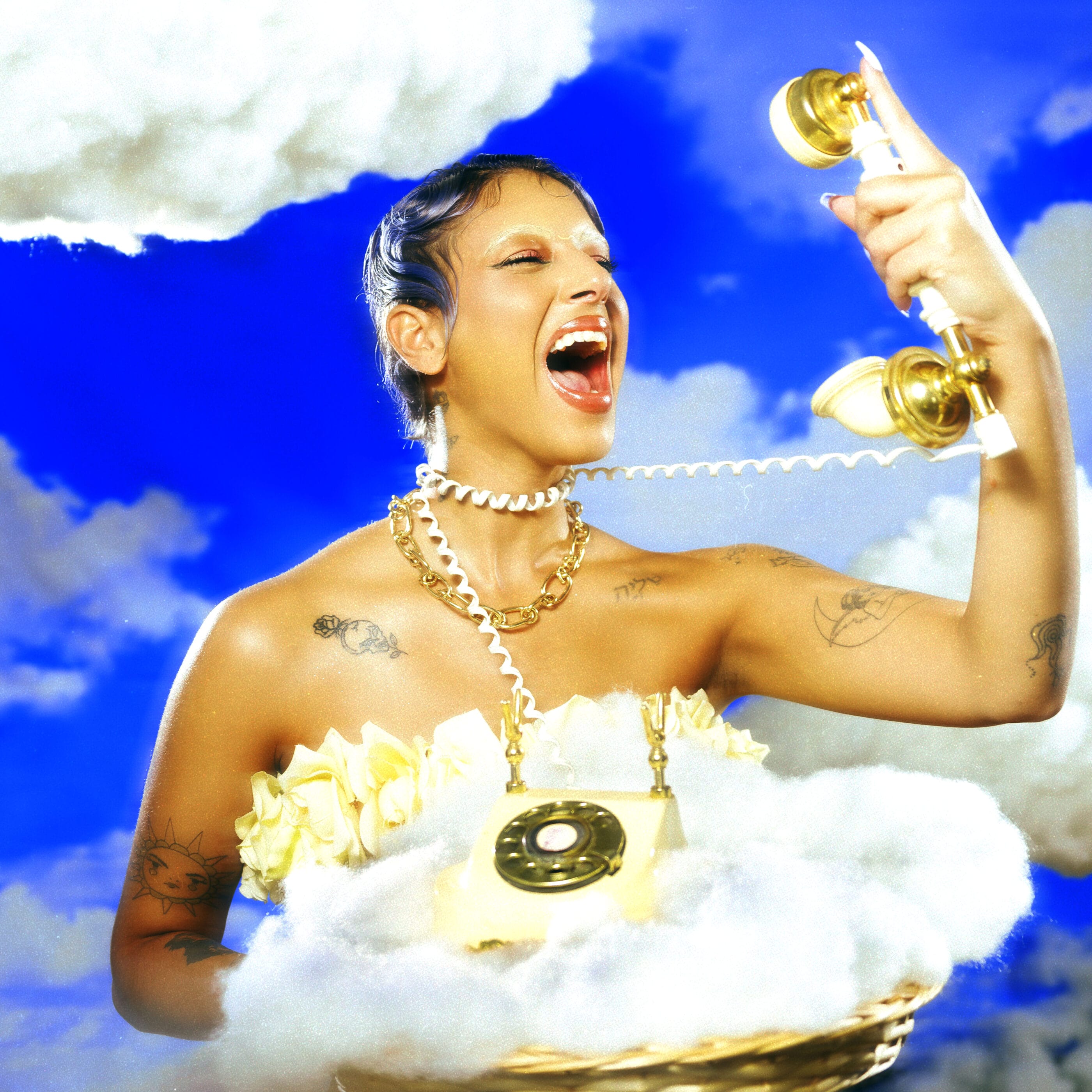
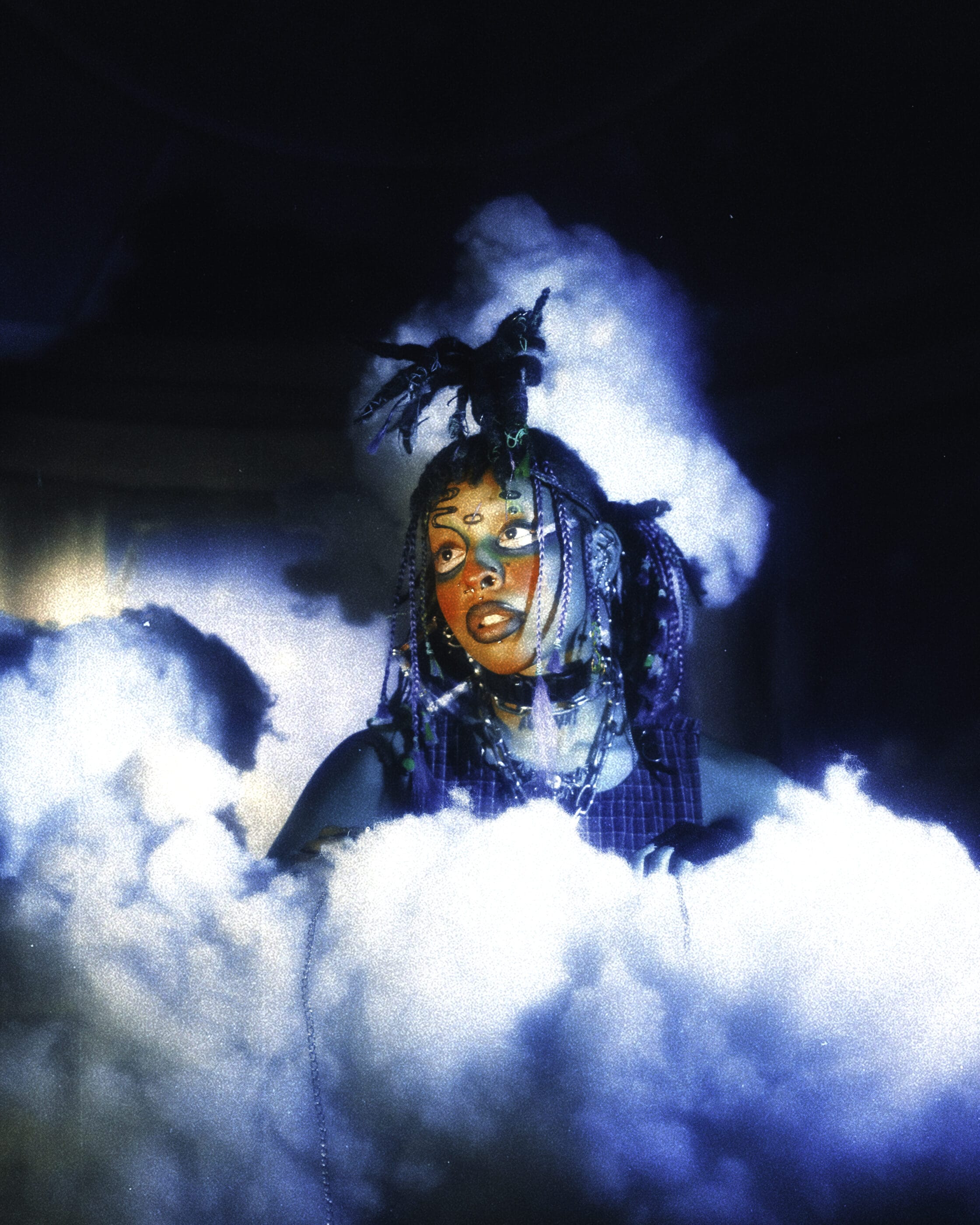
Haha! You can have that. Can you talk about how important color is to you?
It’s huge! Color is both beautiful and symbolic. It’s special because it has a direct link to our emotions. Like, blue can make you feel dramatically different than red or yellow. We see this in cinema all the time. I’ve been emphasizing that a lot in my practice as I continue to learn about my work.
Is it the same thing for you when it comes to your use of primary colors? I’ve heard about how frequently you use them in your work.
Yeah, I’d say so! I don’t know if it’s because I’m a fan of Sonic, Tails, and Knuckles, but there’s something to that trio. It’s such a strong combo that’s used in everything. I know, especially if I plan to get more into cinema, it’ll be important to have a strong grasp of the whole color wheel and all the combinations that come with it, but man, there’s just something about that primary that I keep coming back to. I love the balance. I love how all three colors perfectly play off of each other.
It’s interesting that you mentioned balance. Since there’s so much otherworldliness in your images, your concepts may be hard for some folks to follow, but the primary colors are the familiar thing that keeps the work grounded creating that balance. That might be a reach.
No, you’re absolutely right about that.
Observing your work, there’s a strong digital component to it. It feels futuristic. So, what made you sort of switch gears and create a print piece when you made the book?
Honestly, I’m getting fed up with the way we’re approaching technology, or at least how art is being consumed through technology. I’m mainly thinking about social media.
Right.
I have these moments when I when I go to museums. I look at these works of art on the wall and it’s such a different experience. You’re able to step into these art pieces and feel the full impact of the images: you can move around and look at it from different angles and get up close to see the details. When your work is on a 4 x 5-inch screen through Instagram, you lose all of that. I’ll be honest, a lot of my work is mainly viewed on a screen. I’m appreciative of that and everybody who’s engaged with me. It’s been really a fun journey, but I feel like the pendulum is swinging. I’m at a point where I don’t want to view art in my phone, I want to feel it, I want to hold it. I think other people are starting to feel that same way.
As far as the book goes, I just feel like printing your work engages with the senses more. Bringing the images from the digital to the printed space makes the work become real. I might get less immediate engagement, but the people that care, truly care. I put in a lot of time into curating the image selection, so it means a lot when people take their time to really see what was being created.
Yeah, it’s an intentional experience. How did the bookmaking process differ for you from your normal practice? What sorts of things did you have to do that you normally don’t?
Well, I had to learn InDesign – I had never used it before. Most of all, I took the time to slow down my process and look through everything I had made. I think the oldest photo in the book is from around five years, six years ago. Reviewing that catalog of my work was interesting. It was a first for me because I hadn’t had enough work to do that until now. It was like playing with a fragmented puzzle because I was able to see some work that had similar themes to other pieces I hardly remembered taking.
I’m sure that was such a cool feeling. Were you surprised by any of your previous work?
For sure! After looking at everything I made, I told myself, “You know what? You’re actually a pretty solid artist.” Haha!
Sometimes, I don’t really get why people like my work. I think that’s a lot of artists though. A few years ago, I didn’t have any confidence in my work or direction. That was around 2020 so all of that was going on. I didn’t touch my camera for like seven months or eight months. Oddly enough, stepping away for a little bit did wonders. It gave me time to process so much and learn about who I was from an artistic and spiritual standpoint. It gave me the space to tap in deeper into what I wanted to make and how I wanted to contribute to the world.
So, by the time I was ready to come back to photography, I had a fresh start: I got a new camera and everything. I’m running with Fuji now.
Oh, Fuji? Nice! What are you using?
I shoot with a Fuji X-T4 and a Fuji GFX 50R.
So, you changed your whole kit?
Yeah. I had a Sony A7RIII and it didn’t work for me. I think it’s a great hybrid camera and even better for video. It would take me almost 40 minutes to edit one photo though and it was frustrating. I felt like it was fighting against my process. It just wasn’t the system for me.
Ahh I see. Sometimes getting new equipment that makes you feel like a new artist, too. It’s like a hard reset.
I’m also into retrofuturism, and these Fuji cameras emulate film so naturally. You can’t help but feel cool when you shoot with it!
When you say retrofuturism, I imagine you’re speaking to the ways that the original Blade Runner is sci-fi but has like a retro feel to it. Have you considered shooting photographs on film to emulate that look?
Hmm. I don’t consider it often, believe it or not. I’ve shot some stuff with film and it’s cool, but you make a good point.
I watch shows like Twin Peaks which has a look and feel that I am going for. I believe some of those are shot on film too and it fits the story so well. Now you’ve got me thinking about it. I should probably explore that a little bit more.
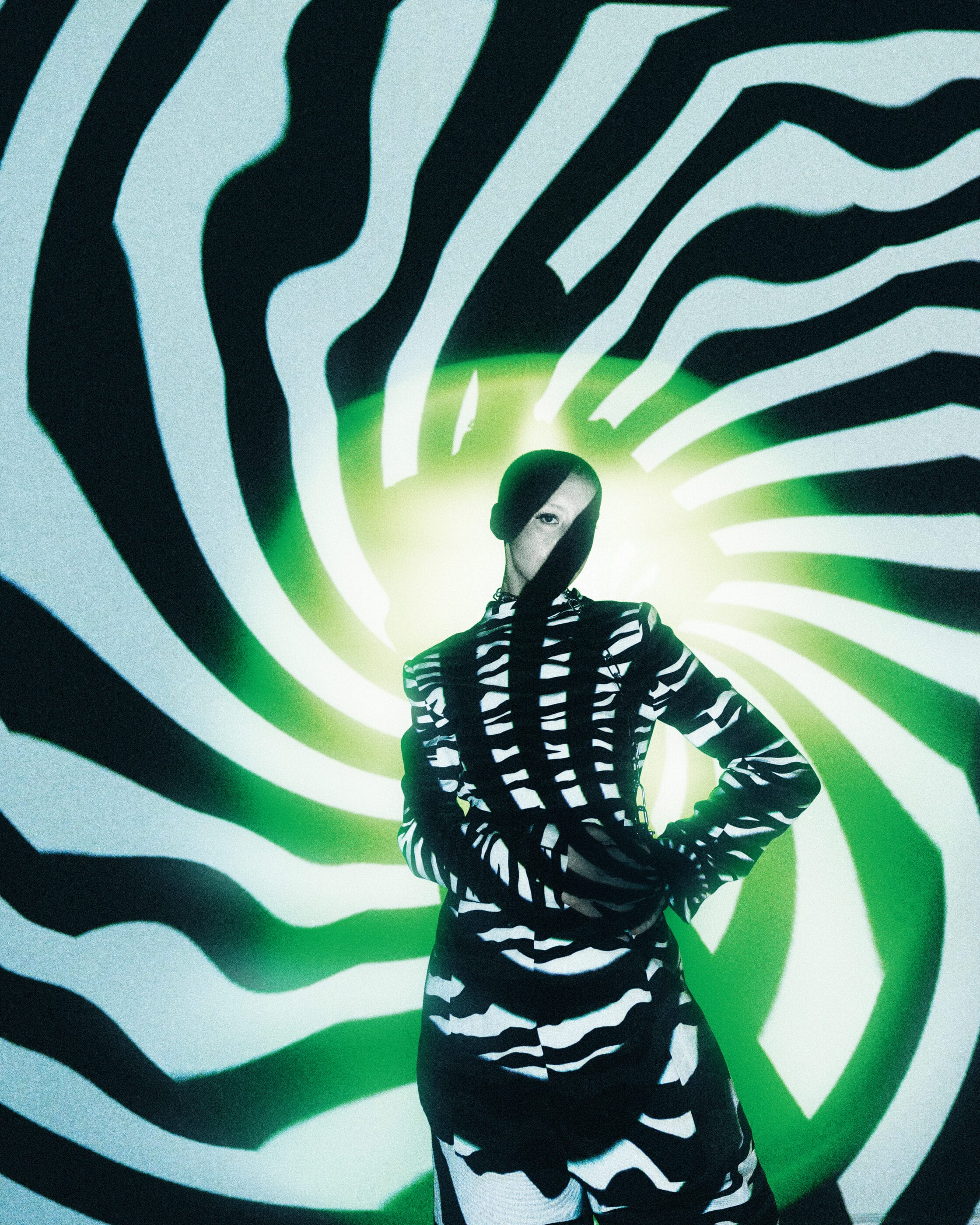
Is there anything that you learned from that bookmaking process that you’re going to bring on to future projects?
Definitely more intentional projects. That, and find more ways to make my work a physical experience. I’m also understanding the value in longer-term projects. I’m trying to let go of that pressure to keep up with everyone, buckle down and really making something I’m proud of.
I had this bad habit of posting work that I really wasn’t happy with. I wouldn’t do certain things that I knew I was capable of but put it out anyway. It was like I was torturing myself. Part of that was perfectionism, but other parts were me trying to stay relevant. I think there’s a difference between acting too fast on something and then hoarding work because you want it to be perfect. I’m looking for that balance with my future projects. I can honestly say that I think everything in the book is good. I didn’t cut any corners on quality. I want to keep feeling that way.
That feeling makes you want to do it again, right?
Exactly.
You’re talking a lot about slowing down. Do you feel that you’re able to do that?
Great question. No. Haha! But even if slowing down means I make time once a week to put three hours into something, I think that’s the key. It’s more about forcing myself to be patient. Usually, when I shoot my personal work I get too excited to take breaks. I want to go, go, go, but I’m trying to prioritize movement over completion. If you put three hours in something every week, it might not be fast, but eventually it gets done. You’re moving.
Is this new, slower method of creating—movement over completion—becoming an intentional part of your process?
Ha! Intentionally is a fun one because it never is. The only time I really take a break is when I hit a wall after putting so much into planning and executing the shoot, that I run out of the energy to do anything else. My post process has gotten faster since I started, but it’s still lengthy at times. Especially if I’m trying to get it super stylized.
Yeah, I think it’s clear that you put a ton of time and thought into every image. I’m wondering, have there ever been any instances where you’ve talked to someone who doesn’t understand the work?
Absolutely. Being asked questions about this is so funny. I think most artists have. I had to learn that I’m not for everybody and neither is my work. I’m proud of the work I’ve been able to make and that’s what matters. But yeah, there are people that don’t understand or like it, and you know, that’s cool.
That must be tough after putting so much time into each image.
It’s crazy, right? I’m building an entirely new world, how can you not be impressed? But some people don’t want to be taken to another world, they like this one. At the same time, someone else could see the same image and love it. That’s what’s so cool about this whole thing: it’s subjective.
People connect to different aspects of media. One person may be drawn towards narrative, while someone else needs a good character to grasp on to. I was just at an event for New Balance, and there was a photo of a shoe in someone’s home. It could’ve looked like a regular photo to one person, but someone else might have a deeper connection to it because they recognize the furniture they used in their own home.
I’ll admit, my work is in a completely different stratosphere for some. My brain is literally in outer space. There are other people who are too, and that’s who likes my work.
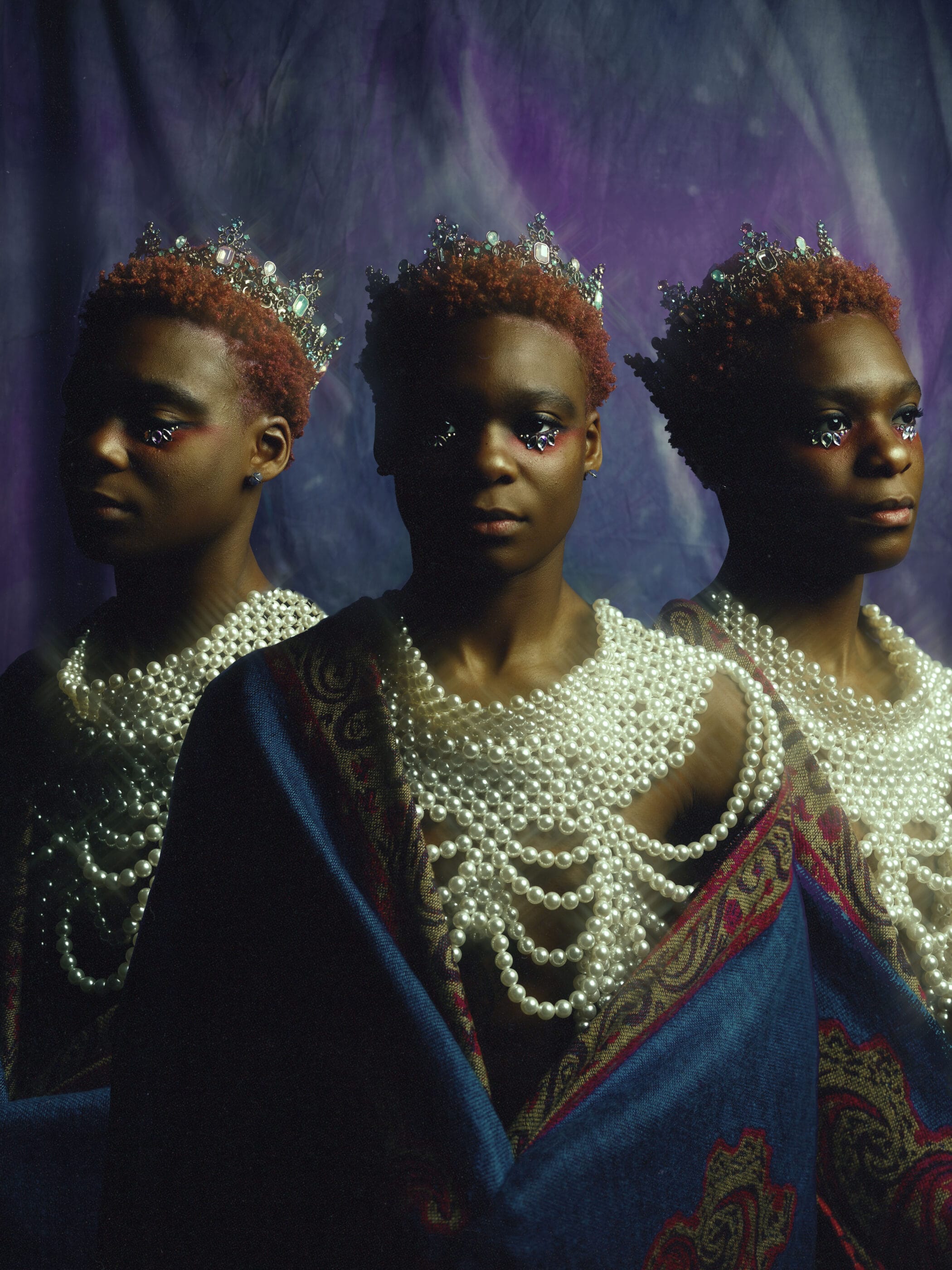
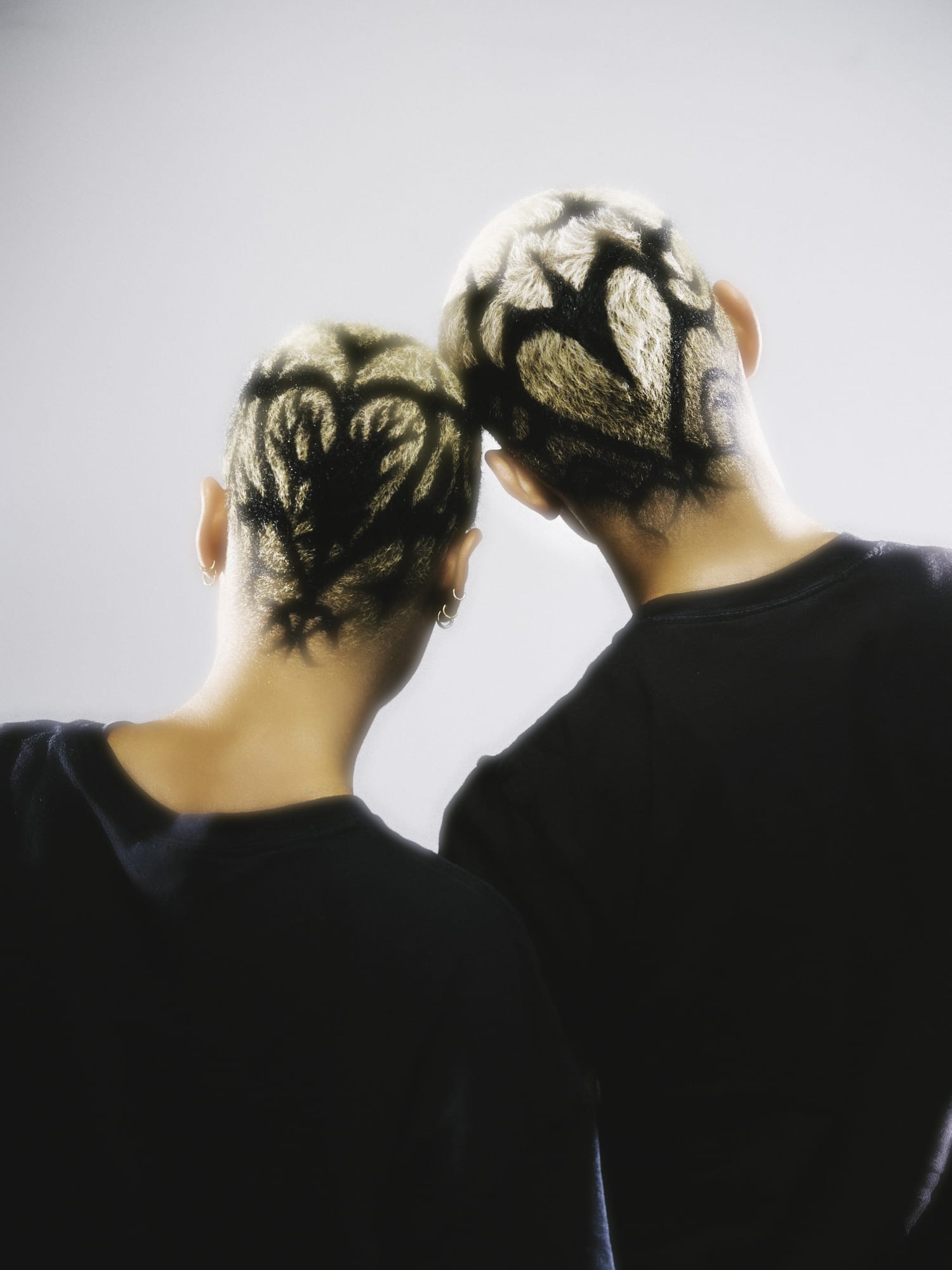
Was that always your mentality or did you get upset when people didn’t understand the work earlier on?
Hmm. I think I’ve been this way for most of my career, but I think it’s because I had a lot of support in my photography. People in my circles enjoyed seeing something different.
I think around my seventh year photographing is when I got in my feelings. I had been doing this for a minute and felt like I was one of the best in my city, at least making this type of work – It’s providing something that you don’t see a lot.
At that time, I had expectations of having solo gallery shows, bigger clients, and more recognition, but I couldn’t secure any of that. It was so confusing. I was being humbled and ever since, I’ve understood that I’m only given things that I’m ready for and everyone doesn’t have to support or understand the work.
How did you keep yourself from getting discouraged during that time? Because I think that happens for a lot of artists. There’s a trajectory where you’re figuring things out, you have some success, and then you try to make a leap that’s a little larger than you’re ready for, and that rejection makes you rethink everything you put your time into.
Man. To be honest, I’m still figuring that out. I will say 2020 helped me a lot because I stepped away from the title of being an artist or a photographer for most of that year. Taking that space gave me time to realize that my identity was too attached to my craft.
Learning who I was outside of my work helped me release any tightness or sensitivity around the things that I made. And I learned a lot about myself through the process: for example, I love to strategize and problem solve, but I’m also a fun person who likes to dance. Understanding that about myself has benefitted the work in the long run. You have to live a full life to be able to tell these stories at a high level.
I say this a lot, but I think my creativity works a lot like the Pink Floyd album cover. The one where the beam flashes on one side of the prism, and a rainbow comes out on the other side.
Dark Side of the Moon?
Yeah! As an artist, you have to go explore: digest different people, different lifestyles, go through some tough seasons, that’s your input. Funneling all of the experiences you have and bringing it back to your art will make your ideas and direction so much stronger.
So true.
But in terms of fighting that discouragement, The company you keep is so important to that. You have to have a creative community you trust, that you can share ideas and time with. We live in a time where we’re only getting more isolated. I’ve been there. When you isolate, you just think the worst things and get really critical about yourself and your work.
Those people have to be supportive, but also hungry creatively. Let’s get real, we all get jaded at times, especially after working with like some bullshit clients. Staying in that jaded state is dangerous for an artist because you can’t even see what’s possible anymore when that’s literally our superpower. I never want to fall into that mindset.
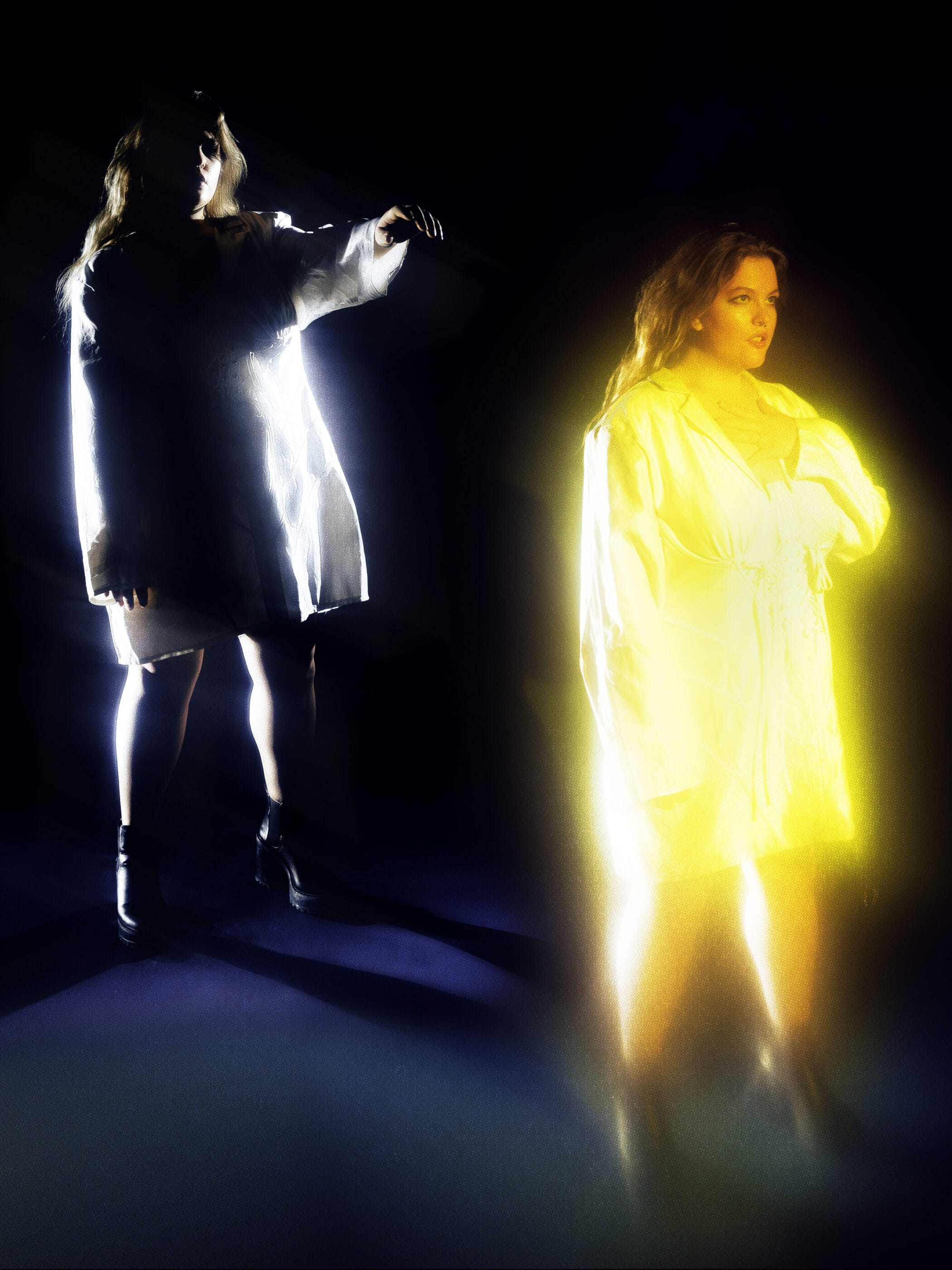
I think you’re in the right place. I want to talk about your process for a minute. Your concepts are still so vivid and detailed. With so many things going on in your photographs, how do you organize your ideas? Walk me through idea to finished image.
Hmm. Ideally, I get hit with the idea or something inspires, and then I open up Google slides and start building a visual deck. The deck is so important to me. It’s like the creative Bible.
I start with the project name, dump all my ideas down on the page, and then make a mood board from there. Once I get the creative parts out of the way, I start going through the logistics. Do I need a stylist? Do I need a makeup artist? Do I need assistants? Where’s this happening? In terms of models, who do I want to tell this story? I just put it all in the deck and then I’ll send it to some people.
Okay, so you keep it pretty structured.
Well, not always. Sometimes I get hit with idea and I call up somebody I trust to meet me in the studio and get right to work. Let me be honest with you though, if it pertains to something outside of the science fantasy, I don’t have very many ideas at the moment. I’m not always the idea guy, I’m not the creative director, but am I the person that can make other people’s ideas real? Absolutely. I’ve learned to be in love with that role. I enjoy seeing other people’s ideas come to life and learning from them so that when I have something I’m ready to work on, I can do it well.
That’s so real. Our roles can be adaptable. What part of your process is most enjoyable?
Wow, these are great questions.
We try to have good conversations here. Haha!
I can’t decide between the shoot and the editing. They’re super close. When it comes to my work, I consider myself a servant. I’m here to serve people, whether that’s a story or a good time on set. I can’t do that by myself. I need someone else: a subject or a production team, especially as my ideas are getting bigger and more detailed. That dependency is something about my process that I will always value.
Pre-production is cool too. I like organizing things, getting it together. There’s a side of me that is more producer-like. All that said, editing is just so satisfying. Being able to see your image go from what was shot and guide it to the point where it turns into what I was envisioning. It’s beautiful. Sometimes, it’ll take me three days per image to finish.
Three days? Wow.
Yeah, because I’m researching: mainly color, and then any type of like special effects details that I’m trying to implement. But at that point, it’s just me and the art. We’re locked in, focused, and in the zone.
I like how you described your art just then. You almost turned it into a character or treated it like a person that you have a relationship with.
Absolutely. I’m a big believer in the idea being its own thing and I’m just a vessel. I’m just a communicator. It’s not really my idea, but I’m the one that can make it happen.
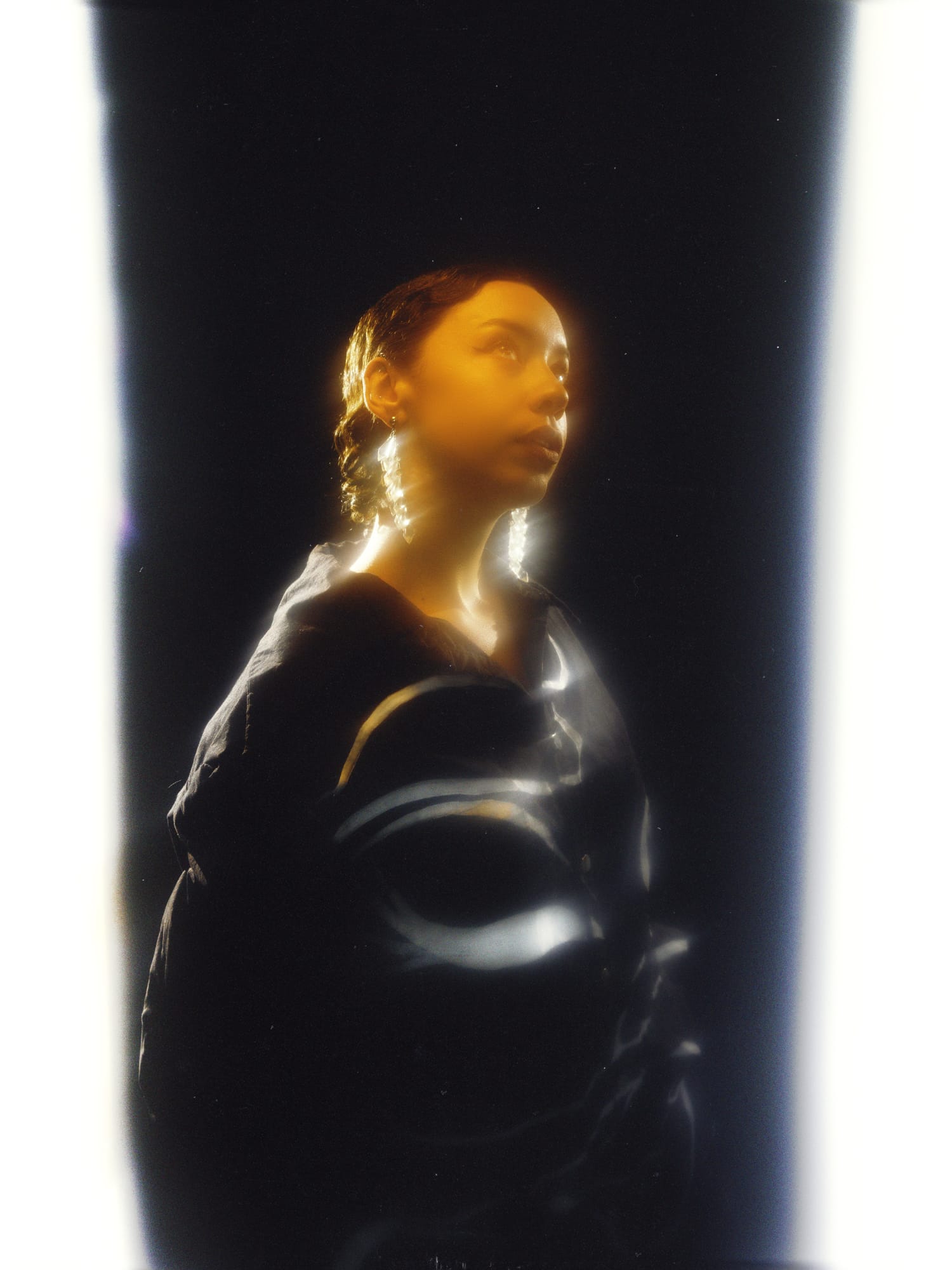
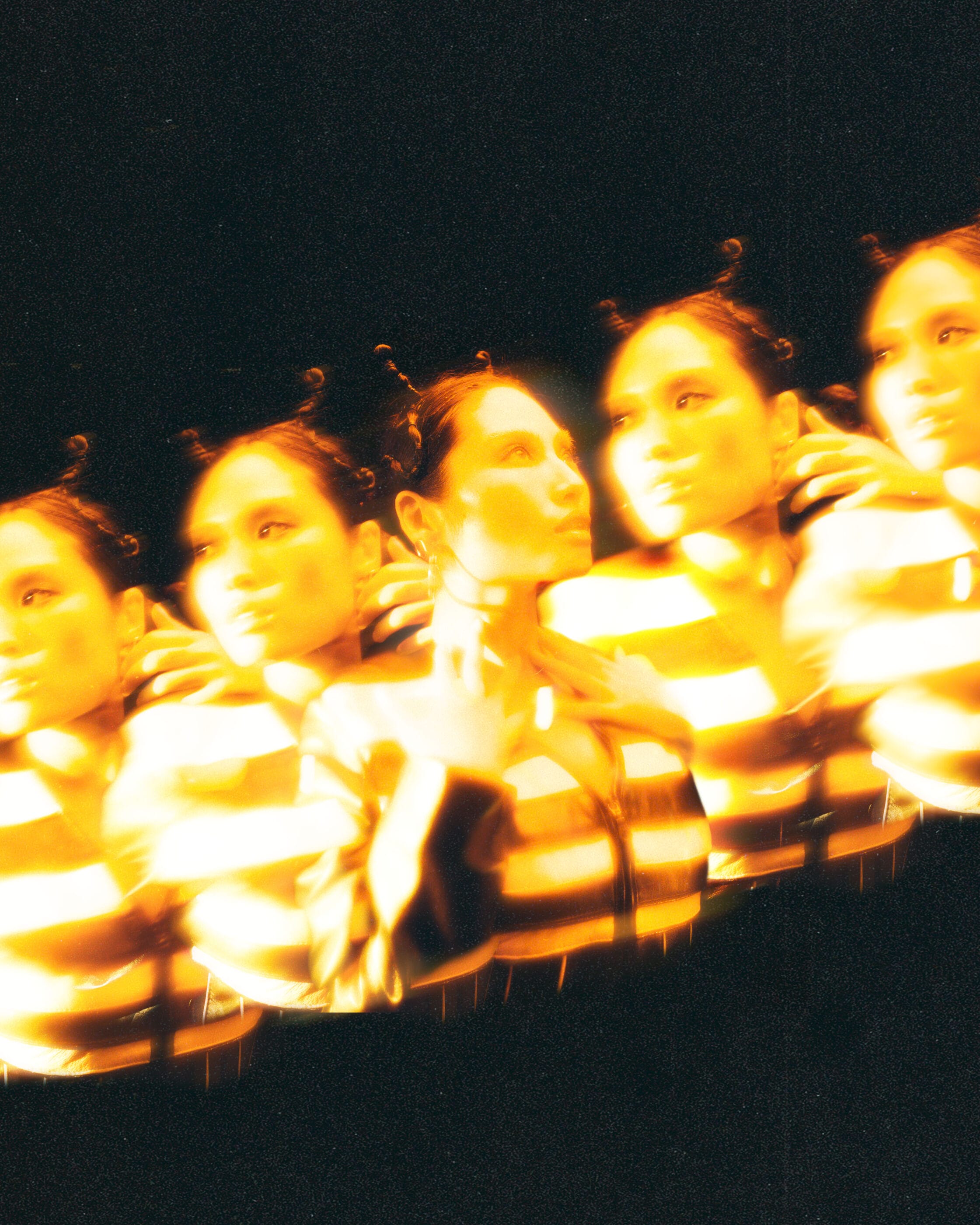
With all that in mind, would you say that you prefer the process or the result when it comes to your work?
Oh, wow. Another great question. You can’t have the result without the process, but I might be a little more result focused.
Mhmm.
I don’t know, I love the process, but it can just take forever sometimes. Science Fantasy technically took 10 years to make, you know? But at the same time, that process was needed to arrive at my end result. I get a ton of satisfaction when things get completed. I’m one of those people who makes to-do lists just to check things off.
In the same breath, I think I need to work on living in the results. Before the book, my process was always: finish the shoot, send it out to the team, post, and then on to the next one. I want to get better at appreciating my wins, and appreciating the process it took to get it done. Even with all that said, I think I’m more results focused.
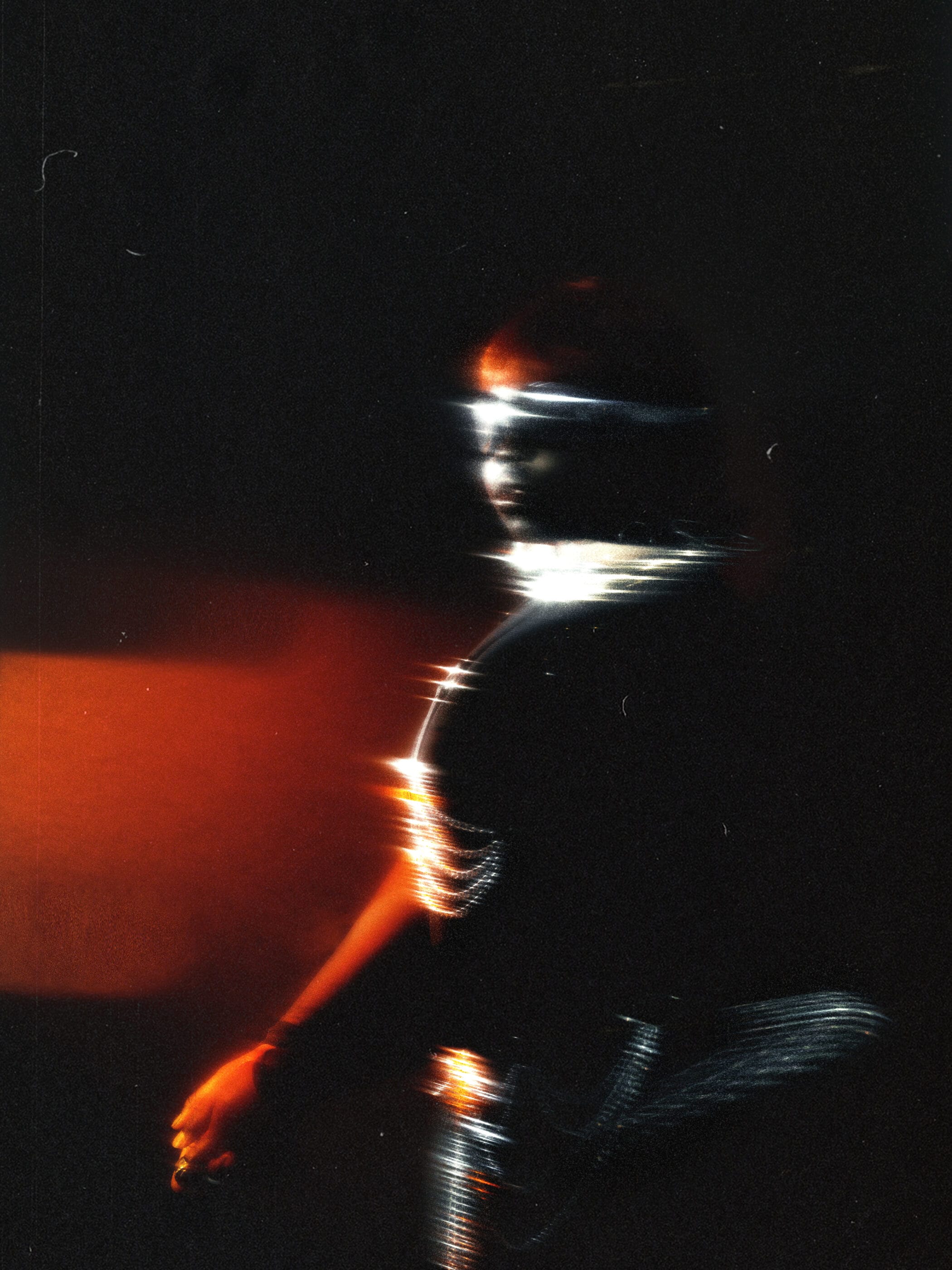
I love how you talked through that answer. I think you should be able to celebrate your work when you finish. It’s an appreciation of all the things that you did to get there. We like to ask that question just to see how our artists think.
Oh, of course! It’s such a good question.
I’ve been seeing a wave of emerging artists and photographers taking direct inspiration from video games, comics, and films like you’ve been speaking on, and finding ways to incorporate them into their artwork, whether through wardrobes, sets or poses. I consider you to be one of the artists on the forefront of that wave. With that in mind, how do you feel about the direction photo creation is going in terms of what is getting made and how it’s being shared?
Ooh, that is a great question. Thank you. In terms of influences, I think people have always been inspired by other forms of media, it’s just that what we’re able to pull inspiration from has improved over time. We’ve never had access to this many high quality shows and movies before now.
There also hasn’t been a generation as tech savvy as mine or, especially the generation after me. They’re able to naturally make work so fast straight off the phone, and what they make is good. It’s sick. The thing I worry about is whether that talent being shown and invested in.
Yeah, so true.
I think a lot of people are falling short on recognition because there’s just so much to digest online and people are overwhelmed. Unless you’re pumping out an enormous amount of content, you’re not able to get that engagement that you’re looking for. But you might if you spend money, of course.
I’ve worked at agencies before and have seen entire teams dedicated to making the same amount of work as these individual artists. Now, they’re required to be their own creative team: the copywriter, art director, photographer and videographer, social analyst, and social media manager. They’re tired and I can tell you from experience.
It’s like you’re being forced to put money into it to get recognized, but if you don’t have access to that money you’re relying on luck. Is that what you’re saying?
Yeah. I just think a lot of people are overworking themselves and not realizing they need to band with other people, because you need a team for this type of work if you want to grow. At the end of the day, I love to see what everybody’s making. I think it’s really sick to see the influences artist are pulling from to create original work. I see people making the coldest stuff now, it’s inspiring.
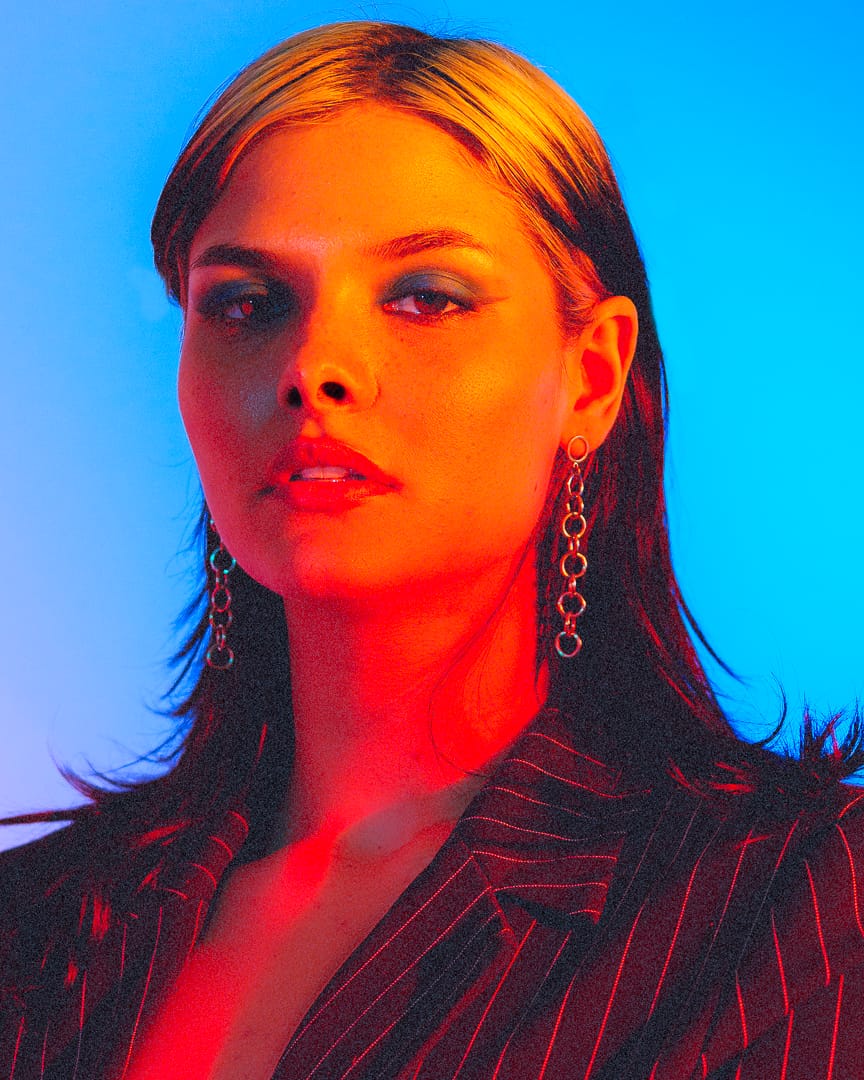
With this influx of media and influences, it’s a catch-22. Thinking about your work, you’ve been exploring photography through a lot of different formats. Ideally, what do you think is the best way to view your work?
I think a physical, in-person experience is ideal. Preferably in the form of a solo exhibition. I haven’t been able to do that yet, but I think Science Fantasy is leading me that way. My work should be printed big, 50 x 60 inches at the very least. I want to hold the images with metallic fluid framing, so that they feel like futuristic versions of Victorian paintings. There’s a royal component to my work that I think deserves that presentation. I’d pair the photos with some sort of LED flooring with motion graphics. I want to build a scene that feels like the image on the wall is leaking into the real world so that the people who view it don’t feel like they’re on Earth anymore. They’re somewhere else completely.
You’ve put a lot of thought into this already!
Ha! Yeah, I spend a lot of time thinking about my work.
What you’re talking about is turning a 2-D art form like photography into a 360-degree experience. I think that’s one of the biggest challenges of this medium. You try to capture a moment or build a narrative, and some details naturally get lost. It’s interesting to see how you’re thinking of framing the viewer with the image itself to enhance the experience.
Thank you.
When thinking of framing this experience, is there a particular story you’re trying to tell? What do you want to say with your work?
The short answer is that my work is about freedom, exploration, pushing forward, and transforming into a higher version of yourself.
This current stage of my work is primarily focused on raw emotion. I’m inviting the audience to open their eyes beyond what they see in front of them. Some people might call it opening your third eye, but I want people to be comfortable with fantasizing, and being more conscious of the energy surrounding them before I show them the next stage of my work.
The next stage will have more grounded narrative elements into it, hitting on politics, like, we mentioned with the other sci-fi stories earlier. In terms of my audience, I joke about this a lot, but I’ll admit some of my work is for the stoners. Haha! I’m cool with that.
Haha!
Yeah! My work is for people who are a little more spiritually awakened or are craving for something.
I really believe that all photographers are working as a collective to document a complete experience. For example, we have street photographers who capture the things that are rooted in reality. I think my job is to capture the things that aren’t. Bring the fantastical element to our eyes and remind people that there’s more going on than what you’re seeing in real life.
Oh, I love that! We’re all making the work collectively… And you’re taking us to places we haven’t seen yet.
Exactly! If you’re willing, I’ll show you the way. Come on!
I’m ready. This has been great, Dennis. Thank you!
I appreciate you for having me.
Science Fantasy Photo Book is now available for purchase here.
